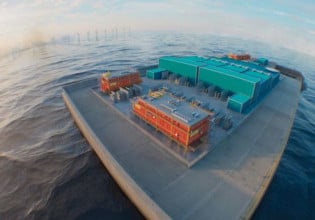Lomiko, Graphene Labs and Stony Brook Demonstrate Graphene Supercapacitor
Lomiko Metals, Inc. and Graphene Laboratories Inc. reached a significant milestone by receiving a prototype graphene supercapacitor and a report from Stony Brook University and New York State's Center for Advanced Sensor Technology (Sensor CAT). The prototype of the supercapacitor was made using graphene composite material prepared using a proprietary technology developed at Graphene Labs. The measured specific capacitance of the prototype was found to be around 500 Farad per gram of the material. This value is comparable with the best values reported in the literature for a supercapacitor of this type.
The exceptional quality of the Reduced Graphene Oxide ("RGO") electrodes allows expansion of the operating voltage window up to 4 Volts. This allows the density of the energy stored in the supercapacitor to be increased. The device has shown this significant performance due to the high specific surface area as well as high electrical conductivity of the graphene produced from graphite material from the Quatre Milles Graphite Project in Quebec. The achievement paves the way for future commercialization efforts by the two companies under the goals of their Strategic Alliance Agreement ("SAA"). The next step is to have the results examined by interested companies within the industry.
Lomiko announced May 29, 2013 that the Research Foundation of Stony Brook University ("RF"), on behalf of the Advanced Energy Research and Technology Center ("AERTC") and Sensor CAT, as well as Graphene Laboratories, Inc. ("Graphene Labs") had agreed to establish a lasting cooperation aimed at investigating novel energy-based applications of graphene.
Then, on September 17, 2013 Lomiko and Graphene Labs reported that in the first step of the conversion process, natural graphite flakes were oxidized and turned into Graphene Oxide ("GO") by modified Hummer's method. As the result, a stable aqueous dispersion with concentration of 40 grams per liter was obtained. Further, the GO was converted into RGO. The specific surface area of the RGO was found to be 500 square meters per gram and its electrical conductivity 4 S per centimeter. These values are similar or exceeding the values for the RGO obtained from other samples of natural graphite taken for comparison and processed by the same procedure.
The properties of graphene, including its high conductivity, mechanical strength, and high specific surface area, make it an ideal electrode material for electrochemical devices used in clean energy applications such as supercapacitors and next-generation Li-ion batteries. Efficient energy storage is the cornerstone for a resilient and reliable energy transmission grid and a key element of the clean energy system.
Under the SAA signed February 12, 2013, Lomiko and Graphene Labs agreed to co-develop a vertically integrated supply chain that includes a secure supply of high-quality graphite, cost-effective and scalable processing, tight quality control and integration of graphene-based products in end-user products. The end goal is to find commercially viable routes to make graphene-based energy storage devices as well as graphene-based nanocomposite materials. In particular, Graphene Labs and Lomiko recently launched a new venture, Graphene 3D Lab Inc. focused on development of the graphene-based composite materials for applications in 3D Printing.
Lomiko also has the option to provide equity financing(s) to Graphene Labs on an exclusive basis for two years if it meets Graphene Labs funding requirement of raising at least $500,000 within eight months of the agreement, $1,000,000 within twelve (12) months and $2,000,000 within eighteen (18) months. If the requirements are not met, Lomiko loses exclusivity but maintains the right to participate in financings on a non-exclusive basis.






